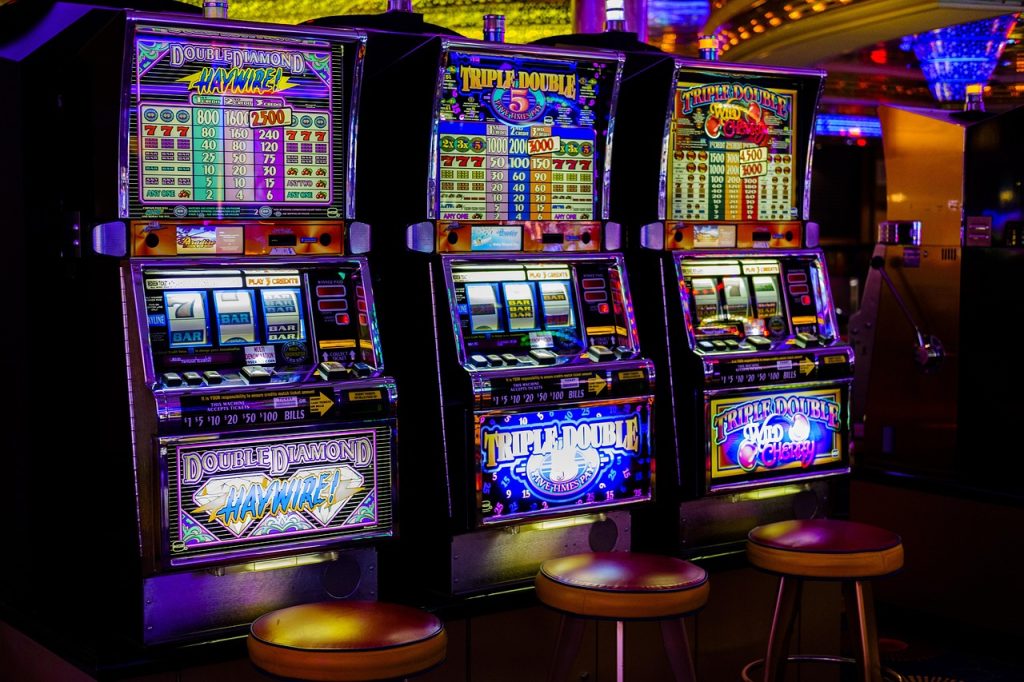Slot machines have come a long way since their invention in the late 19th century. From simple machines with spinning metal reels to sophisticated online platforms offering immersive video slot experiences, the transformation has been nothing short of remarkable. Today’s slots combine engaging graphics, music, features, and even storylines that were unimaginable during the early days of mechanical gaming.
This article explores the technological and cultural evolution of slot machines, examining how innovation has shaped not only the way we play but also how we experience entertainment through gambling.
The Origins: The Mechanical Slot Era
The very first slot machine was created by Charles Fey in the 1890s. Called the Liberty Bell, it had three mechanical reels and five symbols, including the famous bell. Players would pull a lever to spin the reels and hope for matching symbols to line up—a straightforward, mechanical process.
These early machines were found in bars and shops and paid out prizes like cigars, drinks, or gum. Over time, they were modified to offer cash payouts, and additional reels and symbols were introduced to make gameplay more exciting. These machines became incredibly popular in the mid-20th century and set the foundation for the gambling industry’s rapid expansion.
Despite their simplicity, mechanical slots offered a physical and tactile thrill that appealed to casual players and serious gamblers alike.
The Rise of Electromechanical and Digital Slots

In the 1960s, electromechanical slot machines changed the game. These machines still had physical reels, but were powered by electrical components rather than fully mechanical systems. The Money Honey by Bally was one of the first successful electromechanical machines and introduced features like automatic payouts and larger jackpots.
By the 1980s and 1990s, the introduction of microprocessors and video screens transformed slots again. Machines could now handle more complex algorithms, offer bonus games, and display animations and digital interfaces. This era marked the birth of video slots, which could include more reels, more paylines, and customized themes.
With digitalization came greater flexibility, and software providers began developing games that were more than just chance—they became a form of interactive entertainment.
The Online Revolution: Slot Machines Go Digital
The late 1990s and early 2000s saw another leap in evolution—slot machines went online. The rise of the internet allowed developers to bring digital slot games to a global audience. Suddenly, players could enjoy their favorite games from home, without visiting a physical casino.
Online slots introduced exciting features like:
- Free spins and expanding wilds
- Progressive jackpots that pooled across multiple casinos
- Advanced bonus rounds and mini-games
- Hundreds of themes based on pop culture, history, and mythology
These innovations made slots more appealing to a wider audience, from casual gamers to serious online gamblers. They also gave rise to mobile slots, allowing gameplay on smartphones and tablets—a crucial step in making gambling more accessible than ever.
Today’s Landscape: Immersive and Personalized Slot Gaming

Modern slot machines are a far cry from the Liberty Bell. Today’s games are often created by major software developersusing cutting-edge technology, 3D graphics, and cinematic music. Online slots are no longer one-size-fits-all—they’re personalized, gamified, and often linked to loyalty programs that enhance player retention.
In addition, many platforms are now incorporating features such as:
- Virtual reality (VR) and augmented reality (AR) for immersive play
- Cryptocurrency payments for anonymity and fast withdrawals
- AI-driven recommendations based on player behavior
- Social slot games that allow interaction with other players
This ongoing innovation continues to push the boundaries of what a slot machine can be, turning gambling into a full-fledged entertainment experience.
Final Thoughts: A Game That Keeps Evolving
From spinning mechanical reels in smoke-filled saloons to playing animated video slots on mobile apps, the evolution of slot machines reflects the broader technological advancements of our time. Each phase in the journey—from mechanical to electromechanical, to digital, to online and now immersive VR—has added new dimensions to the gameplay experience.
Slot machines have managed to stay relevant by adapting to changing tastes, technologies, and platforms. And with continuous development in artificial intelligence, blockchain, and virtual reality, it’s clear that the future of slot gaming still holds plenty of surprises.
